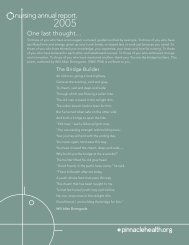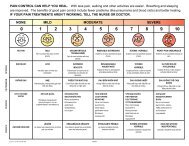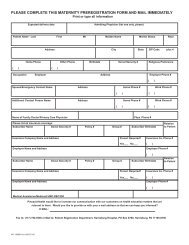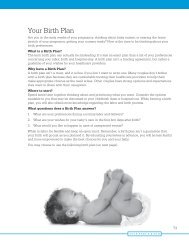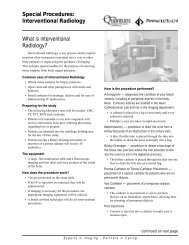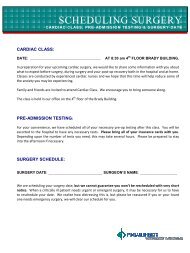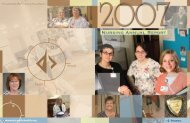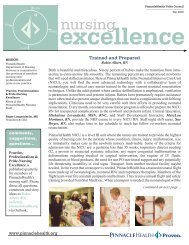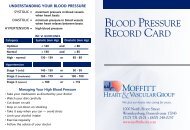Your Baby's Birth - Pregnancy & Childbirth Home
Your Baby's Birth - Pregnancy & Childbirth Home
Your Baby's Birth - Pregnancy & Childbirth Home
You also want an ePaper? Increase the reach of your titles
YUMPU automatically turns print PDFs into web optimized ePapers that Google loves.
Choosing and Using a Car Seat<br />
Pennsylvania’s Child Passenger Safety Law requires that all children under age 4 must be<br />
properly restrained and transported in a federally approved car seat that is appropriate<br />
for the child’s age, height and weight. Children ages 4-8 must use a booster seat if they are<br />
no longer in a car seat. Children ages 8-18 must use a vehicle seatbelt.<br />
In addition to compliance with the law, the use of a car seat also has the following benefits:<br />
• Prevents your infant’s body from acting as a missile in the event of an accident.<br />
• Reduces the incidence of death or injury by spreading the impact along the strongest part of the<br />
infant’s body.<br />
• Reduces discipline problems of toddlers in the car, since they are used to sitting securely<br />
fastened in their seat.<br />
When installed and used properly, a safety seat can reduce a child’s chances of being killed or<br />
injured in a crash by 71%.<br />
In March/April 2011, The American Academy of Pediatrics (AAP) and the National Highway<br />
Traffic Safety Administration (NHTSA) revised their child restraint guidelines in order to<br />
keep pace with the latest scientific and medical research and the development of new child<br />
restraint technologies. They are now advising parents and caregivers to keep children in<br />
each restraint type, including rear-facing, forward-facing and booster seats, for as long as<br />
possible before moving them up to the next type of seat.<br />
Types of car seats<br />
Rear Facing Seats<br />
• Keeping your child rear-facing as long as possible is the best way to keep him or her safe.<br />
• In a policy published in the April 2011 issue of Pediatrics, the American Academy of Pediatrics<br />
(AAP) advises parents to keep their children in rear-facing car seats from birth until the age<br />
of 2, or until they reach the maximum height and weight allowed by their car seat’s manufacturer.<br />
• In the event of a collision, the impact is spread along the back. A rear-facing child safety seat<br />
does a better job of supporting the head, neck and spine of infants and toddlers in a crash,<br />
because it distributes the force of the collision over the entire body.<br />
• Newborns must be reclined at a 45 degree angle to prevent their head from dropping forward and<br />
blocking their airway. As the neck becomes stronger, the car seat may be more upright.<br />
• Many rear facing car seats can also be used as infant carriers.<br />
• Harness straps should come out at or below the shoulder level.<br />
Convertible Seat<br />
• Designed by the manufacturer to be both a rear-facing seat and a forward-facing seat.<br />
• Not used as an infant carrier, due to larger size.<br />
• There are usually two different belt paths for the car seat belts, depending on whether the seat is<br />
facing forward or backward.<br />
• When the seat is facing forward, it is essential to move the harness straps to the upper shoulder<br />
slots, so they come out at or above your child’s shoulder level.<br />
31<br />
Y O U R B A B Y ’ S B I R T H





